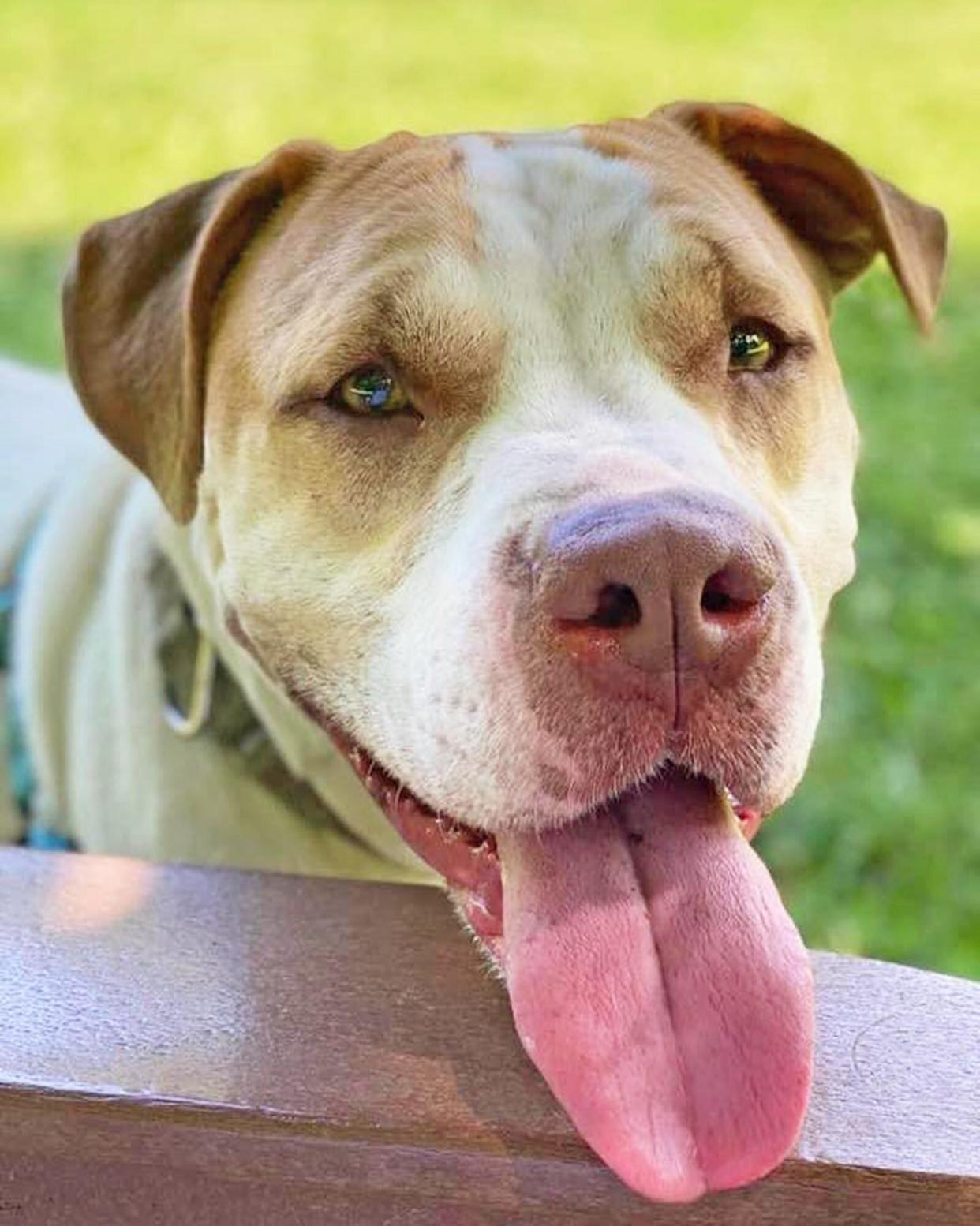Coco Is a Silly Dog Who Loves His People, So Why Has He Spent More Than 1,000 Days in a Shelter?

Courtesy of Main Line Animal Rescue (MLAR)
Main Line Animal Rescue in Pennsylvania commemorated a not-so-happy anniversary earlier this week. One of its residents, a dog named Coco, marked his 1,000th day in the shelter.
It stinks so much because he's a great dog. The 5-year-old is a silly boy who likes paddling in the stream near the shelter and playing with his KONG toy. When he's not playing, he's plenty affectionate and likes to loaf around, Nichola Redmond, site director for Main Line, tells Daily Paws.
Coco, however, has stayed at Main Line for nearly three years because the shelter environment makes him anxious. The anxiety manifests when he meets potential adopters. He'll bark loudly and lunge at them, Redmond says. The people are unfamiliar, which worries him.
"He's unsure," Redmond says. "He's not a very confident dog. It takes patience and perseverance."
Unfortunately, Coco is hardly alone. Shelters—even great ones like Main Line—are often loud, hectic environments that stress some dogs out, especially if they're used to living in a home. The stress might make them depressed or reactive in the shelter. From there, it takes the right adopter, a "unicorn," to commit to getting to know the dog and eventually take them home.
"There's [a dog like Coco] in every community without a doubt," Temma Martin, public relations manager at Best Friends Animal Society, tells Daily Paws.
RELATED: 'We Rescued One Another': Loving Owner Adopts Dog Who'd Spent 310 Days in Shelter
Coco's Stay
Coco, a mixed breed likely with some pit bull and American Staffordshire terrier DNA, arrived at Main Line when his owner surrendered him, unable to care for him any longer. They told the staff that he'd had some behavioral issues before, but his neutering seemed to help, Redmond says.
But the shelter is an unknown environment that distresses him, so he barks and lunges when he meets people he's unfamiliar with. That understandably makes it hard for potential adopters to get to know him.
In fact, Redmond says people first coming to see Coco will enter a room with him and be instructed to basically ignore him. Instead of looking at him, they're told to focus on something else in the room. That way, he can get used to the person without as much stress.
"It's awkward at best," Redmond says.
RELATED: Capone the Black Lab Mix Adopted After More Than 1,134 Days at Shelter
Whoever adopts Coco—maybe it's you!—will have to return for several visits so he gets to know them better. His person will have to be committed and patient.
But! That perseverance will likely pay off. By all accounts, Coco transforms into the ultimate good boy once he knows someone and leaves the rescue environment. Case and point: The person who fostered him for two months said Coco was "very well-behaved" and enjoyed sleeping in his crate (or by his foster dad) and playing with his toys.
"If they can do well in one home, you know when that right adopter comes along, he'll do well in that home," says Martin, who has nearly 30 years experience working in shelters and animal welfare.
The rescue's longest resident also enjoys his time outside the rescue, swimming in the stream and relaxing, showing off his fun side.
"When he's comfortable with people, he's super easy with them," Redmond says. " … When he loves somebody he loves them hard."
Now, he'll probably need to be the only dog in a laid-back home that lets him live life at his own pace, but I'm sure plenty of people could provide that environment. After Main Line's social media push on Monday, the rescue had received several applications, but don't let that stop you from filling one out.
RELATED: Pepe the Pit Bull Find a Forever Home After Agonizing 300 Days in Shelter
How to Help
The behavior issues are a major obstacle dogs like Coco have to overcome, but there's more than that. They're also competing with the other dogs at their shelter and how busy you are.
Dogs who adjust well to the shelter, appearing happy and excited to see people, probably look more appealing to prospective adopters. And if someone is looking to adopt a dog quickly, they might not be willing to invest the time and multiple visits into getting to know a dog like Coco.
"It is a common problem," Redmond says.
In short: Dogs who can only be their true selves outside shelters have the hardest times permanently leaving the shelter. It's a problem for no-kill shelters like Main Line, but it can be even more grave at overcrowded shelters that might not have the resources to keep caring for dogs who've stayed so long.
That's why Martin likes foster and foster-to-adoption programs that allow stressed or depressed dogs to live in homes, where they're supposed to. Those stays—and shorter field trips outside shelters—can help the dogs relax and be themselves.
If you are open to adopting a pup like Coco—or the dog himself—be sure to trust the shelter or rescue staff where you're adopting. They're the experts at matching pets and people, Martin says, and they're rooting for the dogs to find their new homes.
Hopefully, that's how Coco will find his new family.
"We're just hoping that Coco's going to find the right person for him," Redmond says. "We know that person or persons are out there, and we are doing our very best to give him all the love and attention he deserves, even if we're not his permanent home. We're just kind of a stopping point for him."

